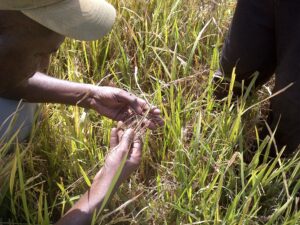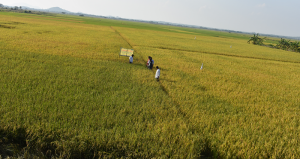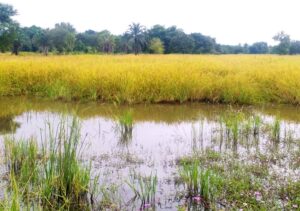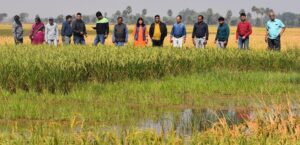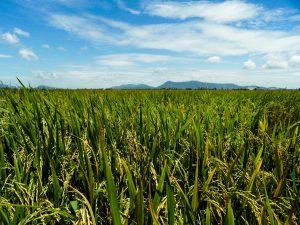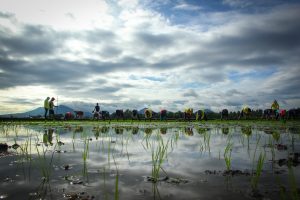
Water is essential in rice farming and its control in rice fields helps farmers attain high yield. More often, however, nature takes this control away from farmers. Drought leaves them with little water, while storms ravage their crops. Both circumstances devastate their rice fields and inhibiting their ability to make a living.
During the monsoon season, South Asia regularly experiences widespread floods. In 2007, heavy rains inundated Bangladesh, India, and Nepal. The Asian Development Bank reported that floods damaged 13.3 million hectares of crop area in Bihar, India, and 130,000 hectares of arable land in Nepal, and took away 25% of the potential wet-season crop area in Bangladesh.
The National Aeronautics and Space Administration (NASA) in collaboration with the National Space Development Agency of Japan launched on 27 November 1997 the Tropical Rainfall Measuring Mission (TRMM) satellite that gives researchers and scientists access to near-real-time rainfall information on a global scale. TRMM products are available in image and American Standard Code for Information Interchange (ascii, pronounced as “askee”) formats. It can be downloaded for free from NASA’s Web site using TOVAS. The satellite observations are complemented by ground radar and rain-gauge measurements to validate the satellite rain estimation techniques. Using the raster package, a set of computer programs developed at IRRI for R, which is an open source statistical software, TRMM rainfall accumulation ascii product was mapped and converted to GeoTiff. This package provides classes and functions to manipulate geographic data in raster format.
TRMM accumulated rainfall (mm) images were captured during the monsoon season (June-September) in South Asia. In 2007, floods were recorded in South Asia. In Figure 1, the orange to dark red regions show high rainfall accumulation in areas severely affected by flooding. Figure 2 shows the excessive amount of rainfall recorded in 2008. The northern part of Uttar Pradesh in India had the highest rainfall accumulation, not to mention the highest number of casualties.


In a sudden twist of fate, however, this year’s monsoon season took a different turn. As pointed out in The global rice market pauses, this year, India’s summer-season crops were left thirsting for water.
_________________________________
Ms. Asilo is a senior specialist in remote sensing, Mr. Rala is an associate scientist, Mr. Pacheco is a programmer,and Ms. Garcia is an associate graphic designer in IRRI’s Social Sciences Division.

